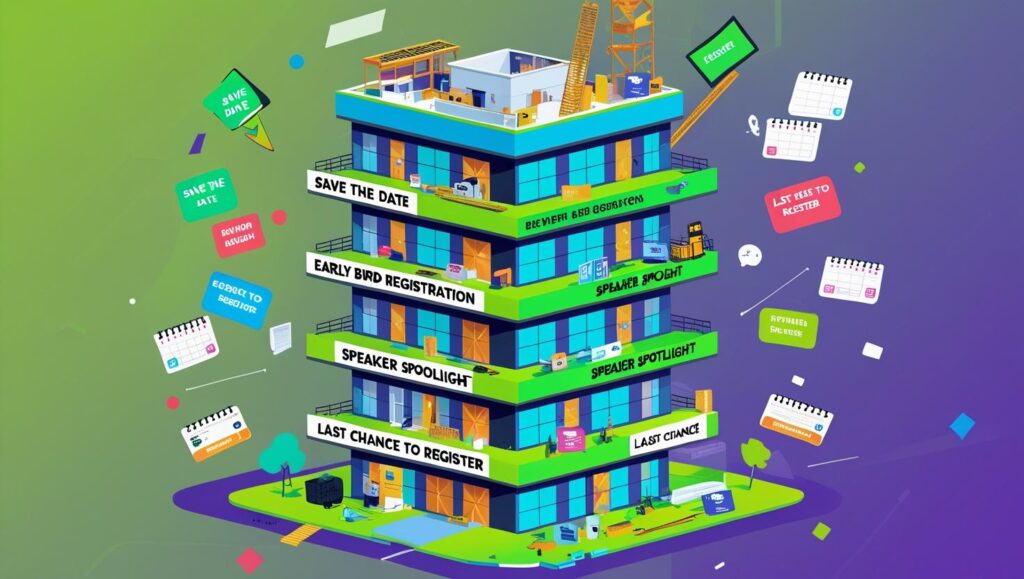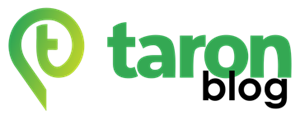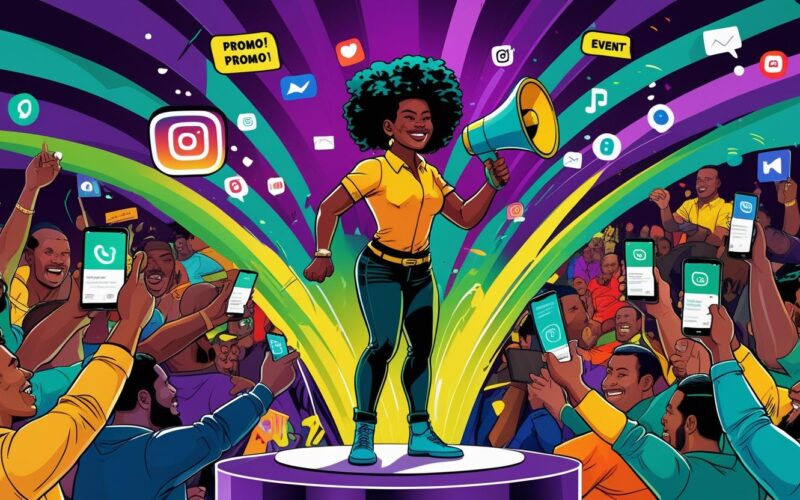Table of Contents
T L D R : Events Promotion Essentials
Events promotion is how you turn attention into attendance. Set a clear promo timeline, know your audience, go multi-channel, create content that converts, leverage partnerships, activate volunteers, and run targeted campaigns. Use Taron Events App to simplify everything. No two events are the same — so your promotion strategy shouldn’t be either.
Promo! Promo!! Promo!!!
Ever lost your voice or spent a lot trying to promote an event? Even when you’re offering “buy two events, get one free” and still no one’s buying? Let’s fix that. Let’s talk about events promotion in Africa: what it really means, why it matters, and how to do it right (without losing your voice or your budget).
What is Events Promotion?
Promotion is simply making something known to the right audience. Publicity, visibility, awareness, whatever you call it, it’s about connecting your event with people who need (or want) to be there. Whether through social media, strategic PR, or partnerships, promotion is what brings attention. And in event promotion, attention equals attendance.
Events promotion is the act of making a planned occasion or gathering known to its target audience using relevant channels. Whether your goal is attendance, ticket sales, or brand visibility, promotion is the engine that drives it.
There are many types of events, and naturally, event promotion strategies vary depending on the event’s goals and type. For instance, promoting a school event is different from a wedding, a product launch, or a large social media event. Each requires a defined approach for success.
Top 8 Events Promotion Strategies To Drive Insane Traffic
Strategies for promoting any event varies according to event type, target audience and event goals. Playing around some core foundational event promotion strategies, brings us to the first:
1. Set a Promotion Timeline
Let’s start from the basis; setting a clear promotional timeline for your event is absolutely non-negotiable. Think of it as your event’s roadmap; without one, you’re driving blind not just you, but your entire team. The perfect timeline isn’t too far away that people forget, nor too close that they can’t make plans. It’s about finding that sweet spot where everything builds naturally and effectively.
A ‘fire brigade’ approach isn’t the best. It might work sometimes, but it leaves everyone exhausted, and exhaustion can lead to low productivity. Proper planning, however, keeps your team organized, knowing exactly when to share content and run sponsored ads. A solid timeline allows you to be proactive, preventing last-minute panic. It also gives you space to anticipate challenges like competitor events or technical glitches, so you can analyze risks and put solutions in place before they become crises.
Aside from your team, your potential attendees need adequate time to discover your event, learn about what makes it unmissable, engage with your content, make a decision, and then actually act (register/buy tickets). A rushed timeline leads to missed opportunities.
2. Know Your Audience and Their Platforms
The first thing that comes to one’s mind after having a mind blowing business idea is “who will buy my market?” In business language, “who is my target market?“
Identifying a business target market/audience is beyond identifying your end users. It also has to do with identifying the type of sponsorship and partnership you need to push your event. Every partnership comes with an interest that satisfies both parties which comes from shared interest. For example, if you’re planning a tech event for aspiring and junior level tech bros and sis, partnering with a tech recruitment agency or training platform makes sense. You get attendees; they get leads—a win-win situation.
Back to our end users, before you do anything, you need to know who you’re trying to reach and what will resonate with them. Go beyond demographics. Think:
A. Psychographics: Interests, values, lifestyle
B. Behaviors: Where they hang out online, how they consume content Where do they spend time? Typically, the general rule is;
- Gen Alpha → YouTube, TikTok, Snapchat
- Gen Z → TikTok, Snapchat, Instagram
- Millennials → Instagram, LinkedIn, YouTube, Facebook, WhatsApp
- Professionals → LinkedIn, Email
- Local communities → WhatsApp groups, Facebook, Radio
It is also important to point that that of course, there are overlaps in behavioral data. You’ll find millennials on TikTok and Gen Z on LinkedIn, proving you can’t rely on assumptions about platform use. So, whether you’re researching how to promote an event on social media, how to promote a school event, or even a product launch, it starts with knowing your audience.
3. Multi-Channel vs Omni-Channel Strategy
Over here, we don’t advice you put all our eggs in one basket because we’ve identified our target audience, and based on our analysis, we saw that different segments of your audience prefer different platforms. Plus, the same folks are likely to use more than one channel, so trying to reach them via a one platform when they are everywhere is simply limiting yourself. Being present on multiple channels ensures you capture a wider net.
Utilizing a combination of digital channels is one of the fastest ways to reach your audience where they are. This typically includes social media, email marketing, and a dedicated event page/website and also involves having strategic SEO for your event page, paid social media campaigns (like Facebook Ads, Instagram Ads), content marketing for your blog, email drip campaigns, influencer marketing on various platforms, and even live streaming. It’s basically going all out for your event because to be honest, people often need multiple “touches” or exposures to an event before they commit. Multi-channel allows for varied content and repeated exposure, reinforcing your message, which in turn registers in their subconscious.
However, the gag is that simply being on multiple channels isn’t enough anymore with synchronization; its like having all your instruments playing without melody and we all that the beauty of music is when everything sounds melodious + in-sync and that’s exactly how you need your multi-channel campaigns to turn out. The idea is to make sure that when someone interacts with your event on Instagram, then clicks to your website, and later gets an email, their journey is connected and smooth.
You’re not just present on YouTube, TikTok, Snapchat, Instagram, Facebook, and WhatsApp; you’re ensuring that the experience across these platforms is consistent, personalized, and helps them effortlessly move towards registering for your event. It’s about knowing where they are in their decision-making process, no matter which channel they’re on, and giving them exactly what they need to take the next step.
Example: Promoting a school event?
Use TikTok + Instagram + WhatsApp (multi-channel) for students and parents. Add email campaigns for millennial parents. Post in community Facebook groups. Sync the experience (omni-channel).
4. Content That Converts
People are naturally drawn to engaging and informative content. This could be anything from high-quality images and videos to insightful blog posts, testimonials, or behind-the-scenes glimpses. The goal is to generate excitement and provide value. Content creation is all about messaging, your messaging must communicate why your event is unmissable. You must communicate what they will get for attending your event. Remember, people don’t attend events, they attend experiences.
In creating compelling content, carefully choose your vocabulary when drafting your message, making use of exciting opening statements can make all the difference
Some messaging tips for you:
- Instead of saying “we have 5 guest speakers,” say “learn insider secrets from industry leaders”
- Use FOMO lines: “Limited seats available!”, “Something big is coming…”
The communication channels are a big determinant of the type of content and messaging style that will be followed, along with the event type and, of course, your target audience. For example, animated content might suit some audiences and perform effectively on certain channels, while being less effective on others. The target audience will also determine the specific style of animated videos that will resonate. This goes for all types of content.
Here are some channel-specific contents that can help:
- Email: Personalized invites, countdowns, early-bird offers
- Social Media: Teasers, reels, Q&As, live videos, polls
- Website: SEO-friendly landing page, event calendar, instant registration
No matter how short the content is, all important information must be included. Information like dates, registration fee (if applicable), registration site, and venue/platform for a physical/virtual event are non-negotiable.
5. Strategic Partnerships
Remember when we talked about identifying your target audience, and how that’s not just about who attends your event, but also about who you can collaborate with? Well, that’s where Strategic Partnerships & Collaborations steps into the room. This strategy is all about leveraging the networks, influence, and resources of others. Instead of doing everything yourself, you create powerful alliances with complementary businesses, community organizations, media outlets, or influential individuals who are willing to share in your goal.
Think of it as instantly expanding your marketing reach without doubling your budget; your partners expose your event to their audience, who are likely interested in similar offerings. When reputable organizations or well-known figures back your event, it instantly boosts your credibility and trustworthiness in the eyes of potential attendees. It’s like a stamp of approvalcthat “I got your back” kind of feeling. Working with social media personalities or community leaders whose followers align with your target audience can create authentic buzz and direct engagement. However, influencer marketing can be really expensive, so this has to be explicitly spelt out in your budget.
Always remember, partnership expectations have to be explicitly stated; deliverables must be spelt out. Never make assumptions. Clear communication from the outset is key to successful collaboration and hinders misunderstandings down the line.
6. Volunteer Marketing
This is an often-overlooked, yet very powerful strategy that can create genuine enthusiasm and expand your reach without breaking the bank. Think of your volunteers not just as helping hands on event day, but as your authentic, grassroots marketing. You know what they say about word of mouth marketing? Nobody does it better than volunteers, they will literally drag people in their network to be part of the event. Imagine one volunteer sharing their excitement, and how quickly that enthusiasm spreads through their friends, family, and online circles, reaching people you never could with just ads. It’s a ripple effect that builds genuine buzz.
You can also consider encouraging them to create their own short videos (e.g., TikTok videos for a school event or social media event) explaining why they’re excited, or to take over your event’s Instagram stories for a day, from a “volunteer perspective.” A volunteer’s personal touch makes a difference.
For volunteers, there’s always a catch, you just have to find that one thing that makes them invested in your event. Imagine what a powerhouse of volunteers will do in promoting a social media event? It’s insane levels of organic growth!
7. Run a Targeted Events Promotion Campaign

An events promotion campaign is your strategy in motion. If your strategy is the plan, your campaign is the actual building. It’s like laying out a strategy to grab attention, spread the word, and boost attendance within a set timeline. Moreover, events promotion campaigns streamlines your communications across all chosen channels. For instance, it might kick off with a “Save the Date,” and then move into “Early Bird Registration,” then a “Speaker Spotlight” series, and end with a “Last Chance to Register” push. It is not just about creating compelling content, it’s how it is strategically deployed.
Based on your audience, different campaign messages reach specific groups. For a school event, one part might target students via TikTok challenges, while another focuses on parents through Facebook. Your campaign activates volunteers to share posts, uses partners for promotion, and employs paid advertising to amplify key messages at crucial points in your timeline. You’re always monitoring performance, using real-time data to adjust your messaging and budget. If TikTok performs better than Instagram, change gears. If email open rates are low, change the subject line. Keep optimising.
8. Making Events Promotion Hosting Effortless with Taron Events App
After going through all this stress, trust me you don’t need another stress of deciding on a hosting platform. So, let’s make it easy for you—whether you’re planning a school event, product launch, wedding, or festival, Taron Events App is your one-stop shop for managing all kinds of events.
Taron Events App will handle:
- Event registration
- Live streaming
- Push notifications
- Community networking
- Seamless check-ins and many more…
In All
No two events are the same. So your events promotion strategy should be flexible, focused, and functional. From knowing your audience to building partnerships, creating content, and engaging volunteers, it all works better when connected.
Use these steps as your blueprint. Then bring it to life with the Taron Events App.
Let your event be the one they remember. And let the Taron Events App be the reason it all runs smooth.
If you’re looking for even more events promotion ideas that won’t shy away from big results, we’ve got you covered. Check out our detailed guide featuring 45 powerful strategies to supercharge your events promotion — from pre-event tactics to offline moves that drive insane buzz and attendance.

